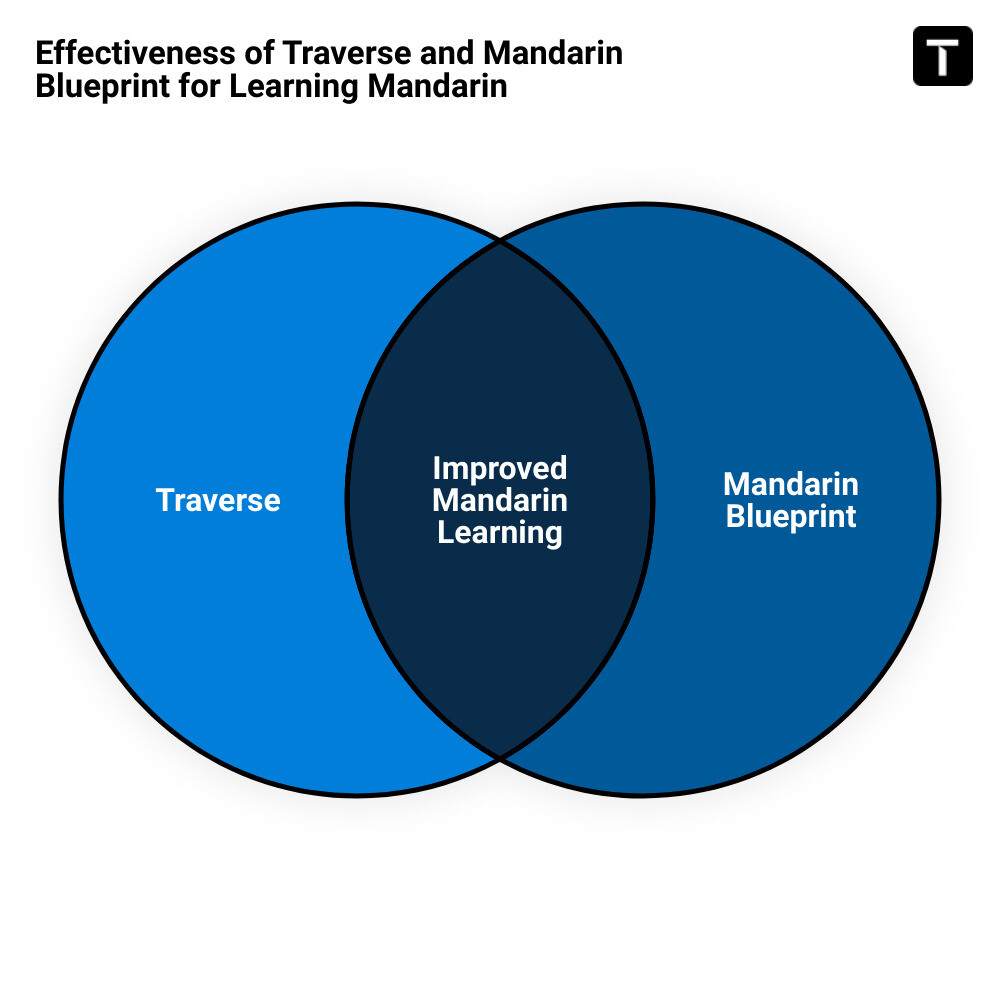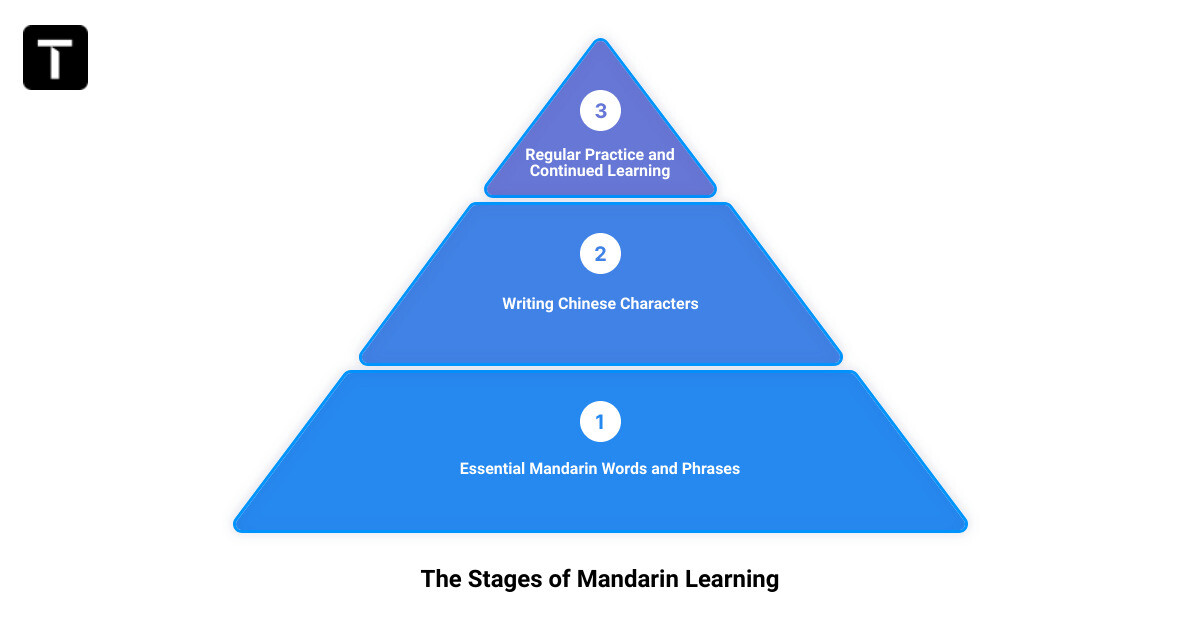In a world where global connectivity is not just a convenience, but a necessity, learning a second language has never been more relevant. Among these, Mandarin Chinese stands out due to its vast number of speakers and its cultural and economic influence. And one of the foundational steps to mastering this language is to get a solid grasp of basic Mandarin Chinese words and phrases.
Whether you're planning to travel to China, work with Chinese colleagues, or just have a keen interest in expanding your linguistic repertoire, understanding Mandarin Chinese can open up a world of opportunities. In this article, we will guide you through the most commonly used Chinese words and phrases, providing you with a solid foundation to start your Mandarin learning journey.
But why should you consider learning Mandarin Chinese? Well, it's not just about the practical benefits, such as career opportunities or travel convenience. Learning Mandarin Chinese can also give you a deep insight into the rich tapestry of Chinese history and culture, and even stimulate cognitive benefits like improved memory and problem-solving skills. Not to mention, it's a challenging and rewarding endeavor that can instill a sense of achievement and self-confidence.
So, if you're ready to uncover basic Mandarin Chinese words and phrases and take a fresh look at learning this fascinating language, read on!
The Basics: Understanding Mandarin Chinese
Unraveling the complexities of Mandarin Chinese can feel like piecing together an intricate puzzle. With its unique phonetics, tonal variations, and thousands of characters, Mandarin is not just another language; it's a gateway to a whole new world of cultural nuances and cognitive challenges. Yet, by starting with the basics, this seemingly daunting task can become a rewarding journey of discovery.
Mandarin Chinese: More Than Just a Dialect
Contrary to common misconception, Mandarin Chinese is not just a dialect among many in China. It is the most widely spoken language globally, serving as the official language of China, Taiwan, and Singapore. With over a billion speakers, Mandarin Chinese, known as Putonghua, is considered the lingua franca of China. Its influence extends back to the late Ming Dynasty, although it only gained official status in 1909.
Mandarin Chinese is characterized by four distinct tones, or five if you include the neutral tone. These tonal variations can significantly alter the meaning of a word. For instance, the word "mother" (mā 媽) can mean "numb" (má 麻), "horse" (mǎ 馬), "to scold" (mà 罵), or a grammar particle that goes at the end of yes and no questions (ma 嗎) depending on the tone used. This tonal aspect can make learning Mandarin a unique linguistic experience, but it's also what makes the language rich and fascinating.
The Role of Mandarin Chinese in China and Taiwan
In both China and Taiwan, Mandarin Chinese is more than just a communication tool. It is an integral part of the education system, taught in schools and used in all aspects of daily life. Despite the existence of various regional dialects such as Cantonese in Guangdong province and Hong Kong, Shanghainese in Shanghai, and Taiwanese in Taiwan, Mandarin serves as a common thread that binds the diverse Chinese populace together.
By learning Mandarin Chinese, you are not only equipping yourself with a new language skill, but you are also gaining deeper insights into the Chinese culture and its regional nuances. Whether it's a simple greeting like "你好" (Nǐ hǎo) — Hello, or a common phrase like "你吃饭了吗?" (Nǐ chīfànle ma?) — Have you eaten yet?, each basic Mandarin Chinese word and phrase you learn is a step closer to understanding and appreciating the richness of the Chinese culture and its people.
In the next section, we'll dive into some essential Mandarin Chinese words and phrases that every beginner should learn. So, stay tuned and get ready to take your Mandarin learning to the next level!
Essential Mandarin Chinese Words and Phrases for Beginners
Setting your footprints in the realm of Mandarin Chinese becomes a breeze when you are equipped with the right arsenal of words and phrases. With these handy expressions, you can navigate through simple conversations, kickstart your language proficiency, and deepen your cultural understanding. Let's get started!
Common Greetings in Mandarin Chinese
Start your day the Chinese way by greeting people with "早上好" (zǎoshang hǎo), which translates to "Good morning". The "你好" (nǐ hǎo) phrase, which means "Hello", can be used throughout the day. Meeting a friend after a long time? Say "好久不见" (hǎojiǔ bùjiàn), meaning "Long time no see". To ask "How are you?", use "你好吗?" (nǐ hǎo ma?). Greet someone in a more formal setting with "您好" (nín hǎo).
Polite Interactions: Saying Please, Thank You, and Sorry
Politeness can take you far, especially when learning a new language. To say "Thank you", use "谢谢" (xièxiè). If you want to apologize or say "Sorry", use "对不起" (duìbùqǐ). The phrase "请" (qǐng) is used to say "Please".
Making Yourself Understood: Asking for Directions and Understanding Prices
Navigating in a new place can be challenging, especially if you don't speak the local language. But don't worry, we've got you covered! To ask "How much is this?", say "这是多少钱?" (zhè shì duōshǎo qián?). If it's too expensive, you can express your sentiment with "太贵了" (tài guìle). To ask for directions, use "去...怎么走?" (qù... zěnme zǒu?), where you replace "..." with your destination.
Saying Goodbye: Different Ways to Bid Farewell
When it's time to say goodbye, you can use several phrases. For a formal farewell, say "再见" (zàijiàn). To bid a friend goodbye, use the more casual "拜拜" (bàibài). If you're planning to see them later, say "回头见" (huítóu jiàn). To wish someone a safe trip, say "旅途平安!" (lǚtú píng'ān!).
Remember, it's not just about the words but the tones you use when speaking Mandarin Chinese. Each word can have different meanings depending on the tone, so paying attention to pronunciation is key. Use resources like Mandarin Blueprint on the Traverse app to perfect your pronunciation skills and master these essential Mandarin Chinese words and phrases.
The Art of Writing Chinese Characters: Simplest Characters to Start With
As you venture deeper into the world of Mandarin, writing Chinese characters, also called 汉字 (Hànzì), becomes an inevitable and enjoyable part of the journey. Fear not, though, as these characters are not as intimidating as they might seem at first glance. Let's demystify this integral part of the Mandarin language by diving into some of the simplest characters you can start practicing with.
The Character for "Eight" (八)
Consider starting your Mandarin writing journey with the character for "eight". Consisting of just two strokes, it's one of the simplest characters to write. The pronunciation, 'bā', is akin to saying "bah" in "Bahamas".
The Character for "Nine" (九)
Next up is the character for "nine". With two strokes, it's only slightly more complex than "eight", but still straightforward. The pronunciation, 'jiǔ', bears a resemblance to "joe" in "Joseph".
The Character for "Ten" (十)
Moving on to double digits, we have the character for "ten". This character is a model of simplicity, represented by two strokes forming a cross or plus sign. The pronunciation, 'shí', can be thought of as "she" in English.
The Character for "Month" (月)
The character for "month" is slightly more complex, consisting of four strokes. Despite this, it's still relatively easy to write. The pronunciation, 'yuè', is similar to saying "yue" in English.
The Character for "Big" (大)
The character for "big" is a simple, three-stroke character. Frequently used in Chinese, it's a good one to remember. 'Dà' is pronounced like "dah" in English.
The Character for "Water" (水)
The character for "water" comes with a bit more complexity but is still quite manageable with only four strokes. 'Shuǐ' is pronounced similar to "shway" in English.
The Character for "People" or "Person" (人)
The character for "people" or "person" is another simple, two-stroke character. 'Rén' is pronounced similar to "ren" in "rendezvous".
The Character for "Mouth" (口)
Lastly, the character for "mouth" is a square-shaped character with only three strokes. 'Kǒu' is pronounced like "koh" in English.
Mastering these beginner-friendly Chinese characters will equip you with a solid foundation to expand your Mandarin vocabulary. As with learning any language, practice is key. Keep writing, and these characters will soon become second nature. The Mandarin Blueprint on the Traverse app is a valuable resource to aid your learning process.

Using Traverse and Mandarin Blueprint for Effective Mandarin Learning
Becoming proficient in Mandarin Chinese is not just about memorizing words and phrases. It's about immersing yourself in a complete learning ecosystem. The combination of Traverse and Mandarin Blueprint is the perfect solution for this challenge.
The Benefits of Using Traverse for Mandarin Learning
Traverse is not just another language learning app. With its science-backed approach, it revolutionizes the process of language learning. Its unique features not only streamline your learning resources but also align them with the latest cognitive science research, thus making the learning process effective and efficient. It provides a brain-friendly approach to understanding how words and phrases fit into the larger picture of the Chinese language and culture.
How Mandarin Blueprint Complements Traverse for Mandarin Learning
Mandarin Blueprint, on the other hand, offers a comprehensive online course that is seamlessly integrated with Traverse's advanced features. The combination of these two resources provides a holistic Mandarin learning experience. The online course covers all aspects of Mandarin Chinese, from basic words and phrases to the art of writing Chinese characters. With Mandarin Blueprint, you're not just learning Mandarin; you're mastering the art of language learning itself.
Importing Anki Decks into Traverse for Continued Learning
Continued learning is crucial for mastering Mandarin Chinese. Traverse allows you to import your Anki decks, enhancing your learning experience. This feature enables you to centralize your learning resources, making learning more streamlined. Anki decks are digital flashcards that you can customize to your learning needs, making them an excellent tool for reviewing and retaining information.
With the right tools and resources, learning Mandarin Chinese becomes not just achievable but enjoyable. Traverse and Mandarin Blueprint are your companions on this journey, providing you with a comprehensive and efficient learning experience. So, get ready to immerse yourself in Mandarin learning and experience the transformative power of these tools.

The Importance of Practice and Further Learning
Entering the world of Mandarin Chinese is like stepping into a garden of linguistic wonders. But just as a garden needs regular tending to flourish, your Mandarin skills also need consistent practice and nurturing.
How Regular Practice Improves Mandarin Skills
The saying, 'use it or lose it' rings especially true for language learning. Regular practice is the linchpin of Mandarin proficiency. Each time you engage with the language, be it through speaking, writing, reading, or listening, you reinforce neural pathways in your brain. This reinforcement makes the recall of Mandarin words, phrases, or characters more automatic over time.
It's important to remember that Mandarin Chinese is a tonal language. Mastering the rhythm and tones is crucial to your language acquisition. Don't be too self-conscious when speaking. Instead, let the words and phrases you have practiced flow out naturally. If you can get "infected" with the rhythm of the language, your control of tones will improve and your choice of words will become more native-like.
Moreover, reading extensively in Mandarin can enhance your vocabulary, reinforce grammatical structures, and help you understand the context in which words and phrases are used. Start with simple content like children's books and gradually move on to more complex texts.
Resources for Further Learning and Practice
While Traverse and Mandarin Blueprint provide a robust foundation for your Mandarin learning, expanding your resource pool can enrich your learning experience.
Online resources, such as language apps, offer a mix of visual, audio, and interactive features to enhance your learning experience. Apps like Duolingo, Busuu, Drops, and Pimsleur can be great supplementary tools to your Traverse and Mandarin Blueprint learning.
For a more structured approach, online Mandarin courses offered by platforms like Coursera, provide lessons from beginner to advanced levels. They can complement your learning by providing different perspectives and teaching styles.
Don't underestimate the power of offline resources either. Textbooks like “Reading and Writing Chinese” can provide in-depth lessons on characters and stroke orders. For vocabulary practice, flashcards are an effective tool. You can even label objects in your home with Mandarin characters and pinyin for a fun, immersive learning experience.
Remember, each resource you engage with exposes you to different aspects of Mandarin, further solidifying your understanding of this rich and complex language.
In the end, the secret to mastering Mandarin lies in your hands. Regular practice, combined with the right resources and an unflagging spirit of learning, can unlock your potential to master this ancient and beautiful language. So keep practicing, stay curious, and uncover the magic of Mandarin Chinese.
Conclusion: Embrace the Journey of Learning Mandarin Chinese
Stepping into the world of Mandarin Chinese can feel like venturing into a labyrinth. But remember, every labyrinth has an end, and the journey to the center is often as rewarding as reaching the destination. The beauty of learning Mandarin is in the process of discovery, the sense of satisfaction that comes with every new word learned, phrase understood, and character mastered.
As you continue to uncover basic Mandarin Chinese words and phrases, remember to relish the journey. Recognize that each new word is a gem, each phrase a treasure, and each character a key to unlock a deeper understanding of not just the language, but also the culture and history of the Chinese-speaking world. The journey of learning Mandarin Chinese is not just about acquiring a new language. It's about broadening your worldview, connecting with a rich culture, and opening doors to new opportunities and experiences.
The language resources available to you, such as Traverse and Mandarin Blueprint, are powerful tools to aid your learning journey. They are there to guide you, provide you with structured lessons, and make the learning process more enjoyable and effective. By leveraging these resources, coupled with your dedication and effort, you will find yourself progressing steadily on your Mandarin learning path.
Remember, learning Mandarin is not a sprint, but a marathon. It requires patience, perseverance, and a willingness to embrace the challenges that come along the way. But the rewards of mastering this complex and beautiful language are worth every effort.
In conclusion, your journey to learning Mandarin Chinese will be filled with challenges and triumphs, frustrations and joys. But as you continue to uncover basic Mandarin Chinese words and phrases, you will find yourself developing not just language proficiency, but also a deeper appreciation for the rich tapestry of Chinese culture and history. So, embrace the journey, take it one step at a time, and watch as the world of Mandarin Chinese unfolds before you.

